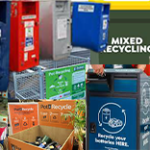
A Guide to Sustainable Transportation
As we strive to reduce our carbon footprint and mitigate the impacts of climate change, one area where individuals can make a significant difference is transportation. From reducing emissions to conserving energy, adopting sustainable transportation practices offers numerous benefits for both the environment and our communities. In this blog post, we’ll explore the concept of going green with transportation and share practical tips for making eco-conscious choices on the road.

Understanding Sustainable Transportation
Sustainable transportation encompasses a variety of modes and practices that prioritize environmental responsibility, energy efficiency, and social equity. It includes alternatives to single-occupancy vehicle travel, such as public transit, cycling, walking, carpooling, and electric vehicles (EVs). By choosing sustainable transportation options, we can reduce air pollution, alleviate traffic congestion, and promote healthier, more livable communities.
Practical Tips for Going Green
- Use Public Transit: Public transit systems, such as buses, trains, and subways, are more energy-efficient than individual vehicles and can significantly reduce greenhouse gas emissions. Whenever possible, opt for public transit for your daily commute or leisure travel to minimize your carbon footprint.
- Carpool or Rideshare: Carpooling and ridesharing are effective ways to reduce the number of vehicles on the road and share the costs of transportation. Consider joining a carpool or using ridesharing services to commute to work or travel to common destinations with friends, family, or coworkers.
- Walk or Bike: Walking and cycling are emission-free modes of transportation that offer numerous health benefits while reducing congestion and pollution. Whenever feasible, choose to walk or bike for short trips or errands instead of driving, and encourage the development of pedestrian and cycling infrastructure in your community.
- Consider Electric Vehicles (EVs): Electric vehicles produce zero tailpipe emissions and are increasingly accessible and affordable. If you’re in the market for a new vehicle, consider purchasing an EV or plug-in hybrid to reduce your reliance on fossil fuels and lower your carbon footprint.
- Practice Eco-Driving: Adopting eco-driving techniques, such as maintaining a steady speed, avoiding rapid acceleration and braking, and keeping tires properly inflated, can improve fuel efficiency and reduce emissions in conventional vehicles.
- Support Alternative Transportation Initiatives: Advocate for investments in sustainable transportation infrastructure and policies, such as expanded public transit networks, bike lanes, and pedestrian-friendly urban design. Get involved in community initiatives and support organizations working to promote sustainable transportation options.
Conclusion: Paving the Way for a Greener Future
By embracing sustainable transportation practices, we can reduce our impact on the environment, improve air quality, and create more vibrant, resilient communities. Whether it’s opting for public transit, cycling to work, or driving an electric vehicle, every choice we make has the power to contribute to a more sustainable transportation system. Let’s join together in the journey toward greener, cleaner, and more efficient transportation for all.
















